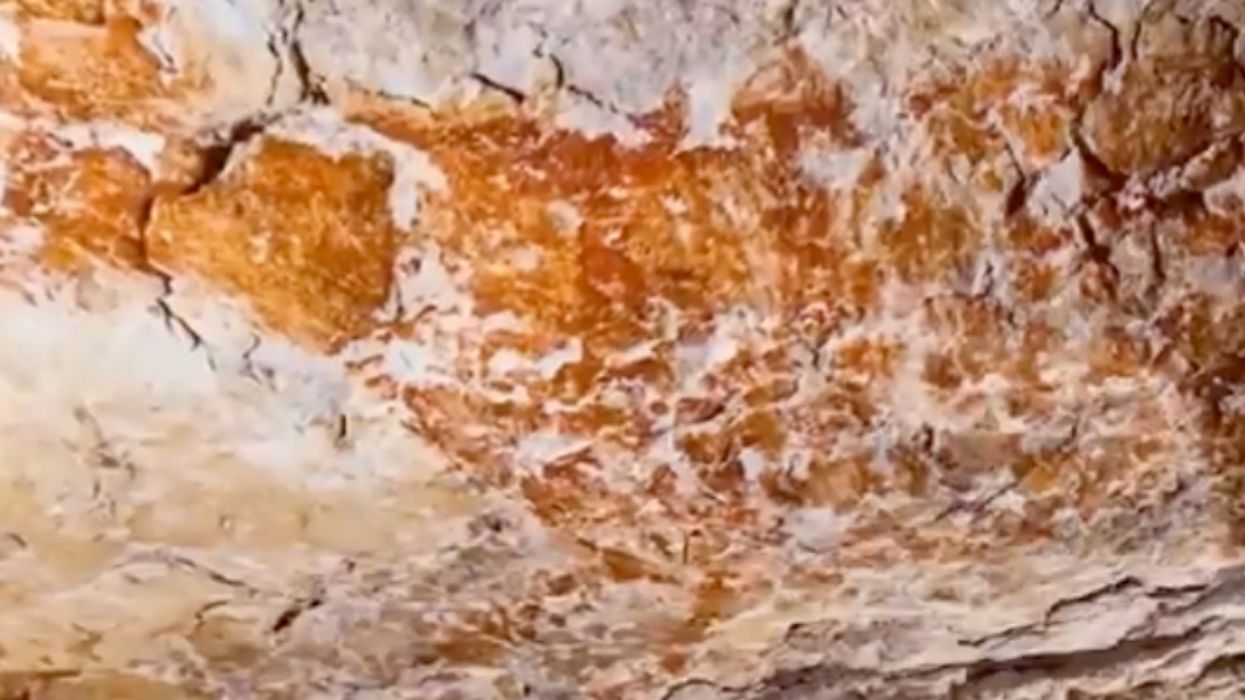Scientists had long believed that the oldest figurative art was made in what is modern day Germany. However, a recent discovery in Borneo is throwing this long-held assumption into question. In a cave is a red drawing of an animal with a thick body and long thin legs. Its creation is being dated to about 40,000 years ago, making it the oldest figurative art ever discovered. The discovery also shows that humans were collectively making a creative transition at around the same time, even separated by continents and oceans.
According to the New York Times...
"...it's possible that people started making art in the Borneo caves sometime between 52,000 years ago and 40,000 years ago.
The new discovery indicates that people in Borneo were already making figurative images at the same time as people in Europe — or perhaps even thousands of years beforehand."
There were multiple drawings discovered within the cave complex.
A rendering of the detail on this particular drawing was released.
There was also this animal with antlers.
Along with these handprints and humanoid figures.
Some wondered who made the drawings.
While others were more concerned with the how.
And many wondered if the technique used to date these cave paintings might be used in other areas of the world.
Regardless of the how and the why, this is a major discovery!
H/T: Twitter, New York Times



























 @realDonaldTrump/Truth Social
@realDonaldTrump/Truth Social Dunning-Kruger Times
Dunning-Kruger Times